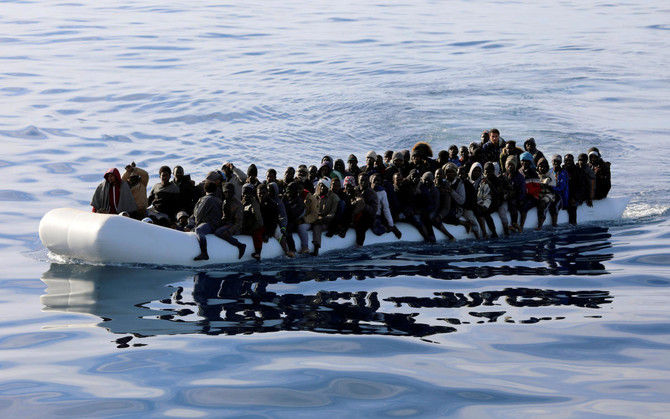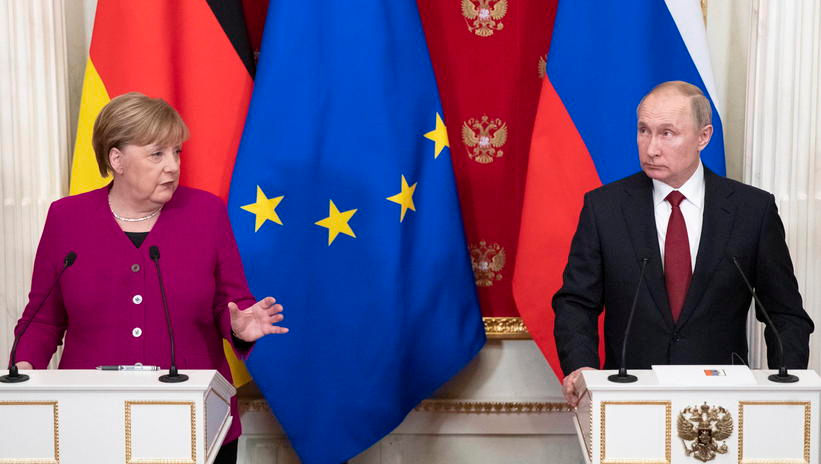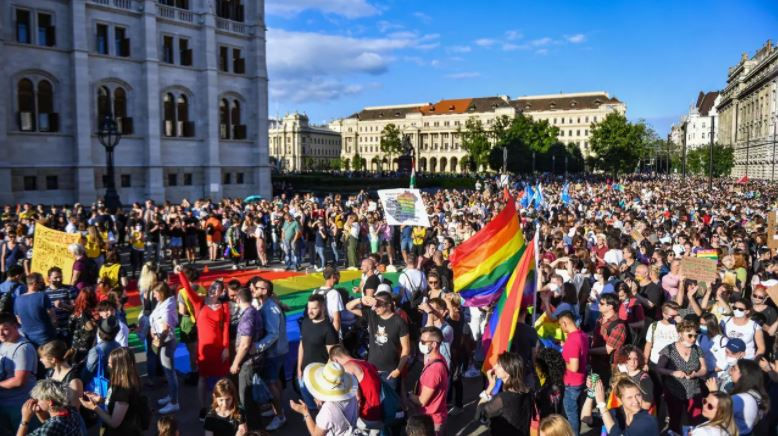Navigating international law with the Libyan Coast Guard
- Sofia Graziano

- May 16, 2021
- 6 min read
Defining the smuggling phenomenon
Migration regulation, asylum right, and refugee reception and protection represent a crucial issue in the contemporary EU policies, and an endless source of political and ideological tension between the countries open to receive asylum seekers, and those who reject such practice and justify it by means of border control and internal security. One of the most relevant and controversial aspects of the European management of migration flows in the Mediterranean concerns the way the EU has been dealing with the so-called Libyan “human smugglers”, i.e., the people who facilitate the entrance of migrants and asylum seekers by organizing dangerous voyages from the Libyan to the Italian shores. Usually, the migrants arrive in Libya after surviving a long and weary journey from their countries of origin where they were suffering hunger, poverty, war, and persecution. Migrants have to pay an exorbitant price for a place on a boat or rubber dinghy in extremely bad conditions. Such voyages often end up in tragic shipwrecks which, according to the International Organization for Migration’s (IOM) Missing Migrants Project data, have already caused 35,000 victims since 2014 [1]. Despite the risk, many migrants and asylum seekers decide to undergo such travel, since the North of Africa represents the springboard to the European Union, and crossing the narrow stretch of sea between Libya and Italy is the last chance to reach a better future.

The EU has been focusing on tackling human smuggling as a strategy to limit irregular migration flow from the Mediterranean and cross-border crimes. However, the wording “human smuggling/smugglers” creates an ambiguity which needs to be addressed in order to properly grasp the problematic side of such policy. European media tends to omit the differences of human smuggling and trafficking. While “trafficking” refers to a forced transfer of people through deception, coercion, and menaces for exploitation purposes, a “smuggled” person voluntarily pays to be irregularly brought across a border. Considering this distinction, there is no room for doubt about the migrants and asylum seekers being smuggled, and not trafficked. European media have rather adopted the term “trafficking”, or using “smuggling” with a distorted meaning, in order to stress its illegal character (even though smuggling as well is a crime against the country of destination). This ambiguous wording choice provides an instrumentally simplified explanation of the complexity of the migratory phenomenon, and it has contributed to feed the Europeans’ misperception and hostility towards the migrant and refugee experience. On the one hand, smugglers put the migrants’ life at risk, but on the other, many migrants turn to them because they have no other chance but to reach the nearest EU coast irregularly. For how paradoxical it is, smugglers are formally prosecuted to defend migrants’ rights, but in fact they also represent, in many cases, the only means by which migrants and asylum seekers can access Europe.
Humanitarian rescue between border security and anti-NGOS campaign
Since 2013, the European anti-smuggling operations have been entrusted to the Italian anti-mafia Directorate (Direzione Nazionale Antimafia - Dna), under the assumption that irregular migration could have been successfully tackled with the same methods used in the ‘90s crusade against criminal organizations in Italy. Similarly to the procedure adopted with repentant collaborators in the mafia trials, European police forces and coastal guards claim jurisdiction over the international waters and arrest individuals on board for cooperating with the smugglers. They have been detaining and questioning the suspects in order to collect information about the broader smuggling organizations [2]. However, such procedures have thus far not brought an effective dismantlement of the smuggling route, since the majority of the condemned people were low-profile figures, or simply migrants who happened to be forced by the smugglers to hold the boat’s wheel or compass during the voyage, and for this reason wrongfully believed to be playing an active role in the smuggling operation [3]. Such summary and superficial judiciary method, clearly unsuccessful in catching the “real” smugglers, seemed to rather be a sort of façade raids, implemented for the political goal of providing a semblance of timely and effective intervention and a scapegoat to feed populist European electors. Moreover, these operations, besides having turned out inefficient per se, have numerous side-effects. For instance, they have worsened conditions for unfairly accused migrants, reinforced the problematic rhetoric on smuggling, and favored the shift of focus from the international law obligation to rescue into irregular migration tackling as a threat for border and internal security. As a matter of fact, the Mare Nostrum (Our Sea) initiative, proposed in 2014 by Italy as a form of coordinated EU search and rescue operations for the migrants in the Mediterranean, was disbanded by the Italian government after only one year of activity (despite having contributed to save over 150,000 lives in that short period) due to both lack of funds and generalized European unwillingness to engage (also financially) in humanitarian aid, which in this perspective, is no longer interpreted as a legal obligation, but perceived as a mere option whether to favor irregular migration or not [4].
The European Union has been translating this narrative of criminalization of migration into concrete management practices, such as the Frontex directive not to automatically consider as emergency events the satellite distress calls, despite this being the obligation under maritime law, when they come from beyond 30 miles from the Italian coasts [5]. This has caused systematic delays and failure to rescue and resulted in deaths by shipwrecks, the most recent of which occured on 21st April 2021, when 130 migrants’ SOS call for help had basically been ignored for two days by both Italian and Libyan authorities [6].
As a consequence of the inactivity of governmental rescue ships, NGOs ships started to intensify their humanitarian aid operations in the Mediterranean. These NGOs represented an obstacle for the continuation of the European policy of hostility, since many of them were not eager to help the Dna collect information about the smuggling organizations, as they claimed that such activity was not the duty of the humanitarian operators, and that it could have endangered their neutrality and made their intervention less effective [7]. Since then, NGOs dedicated to saving migrants and asylum seekers’ life from shipwreck in the Mediterranean have been facing Italy’s and Europe’s hostility, in form of slander, intimidation, and bureaucratic restrictions [8]. Such anti-NGOs information campaign was aimed at downplaying their role and function in the framework of international law, as well as at criminalizing their activity by promoting the assumption that they were ‘sea taxis’ cooperating with the smugglers in facilitating the migrants’ arrival in Europe.
The EU-supported Libyan coast guard
Since 2017, the EU, and in particular the Italian Minister for Internal Affairs, Marco Minniti, has extended its border management operational area to the Libyan coast itself by supporting and financing the Libyan Coast Guard’s migrants’ interception activity. This was initiated in order to “prevent further tragic losses in the Mediterranean and to crack down on migrant smuggling networks” [9], under the assumption that Libya was a ‘safe port’ able to guarantee migrants and refugees proper protection and respect for human rights. As it is tragically known, this is not the case. Such EU-Libyan alliance is predictably turning out detrimental on these people’s safety and dramatically in contrast with the democratic and humanitarian values the EU was founded on. Migrants intercepted (or ‘rescued’, as it has recently been stated by Italian Prime Minister Mario Draghi) by the coast guard are forcibly returned to Libyan detention facilities, where they experience further abuses and extortions [10]. However the EU, established promoter of human rights protection worldwide, and initiator of refugee law (which, ironically enough, was initially designed to protect European refugees after the Second World War), consciously sponsors these forcible returns, refuting to acknowledge the fact that by rejecting migrants and asylum seekers, they are condemning them to dire conditions and horrific violence back on the Libyan shores.
Since many of these facilities are unofficial and run by the Libyan governmental militia, UNCHR do not have access to full data; however, it is reasonable to believe that over 4,000 people have been intercepted and returned to Libyan since the beginning of 2021 [11]. Amnesty International has also been denouncing such violation of human rights and Italy’s cooperation with Libya on the interception of migrants and asylum seekers [12].
Any direction the EU takes towards the migration and refugee issue defines its identity. For now, the EU countries are choosing a strategy of hostility, which accommodates the immediate ideological and pragmatic needs of the European populist right, and contributes to consolidate the wrongful idea that the fair treatment of migrants and refugees is up to the receiving State, and is not a matter of international law [13], while spreading a criminalized and dehumanized vision of migration. Now the question is whether this is solely a temporary solution reflecting the current political atmosphere, or the beginning of a consolidating trend which is lasting enough to haunt the future EU position in the international humanitarian scenario.



Loved the article!